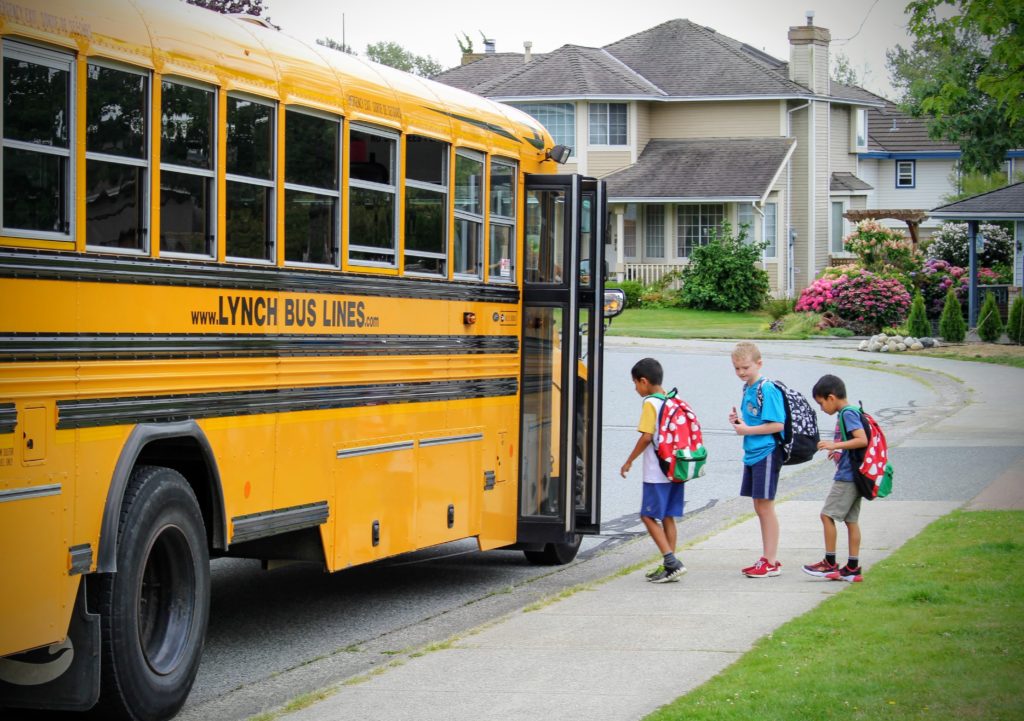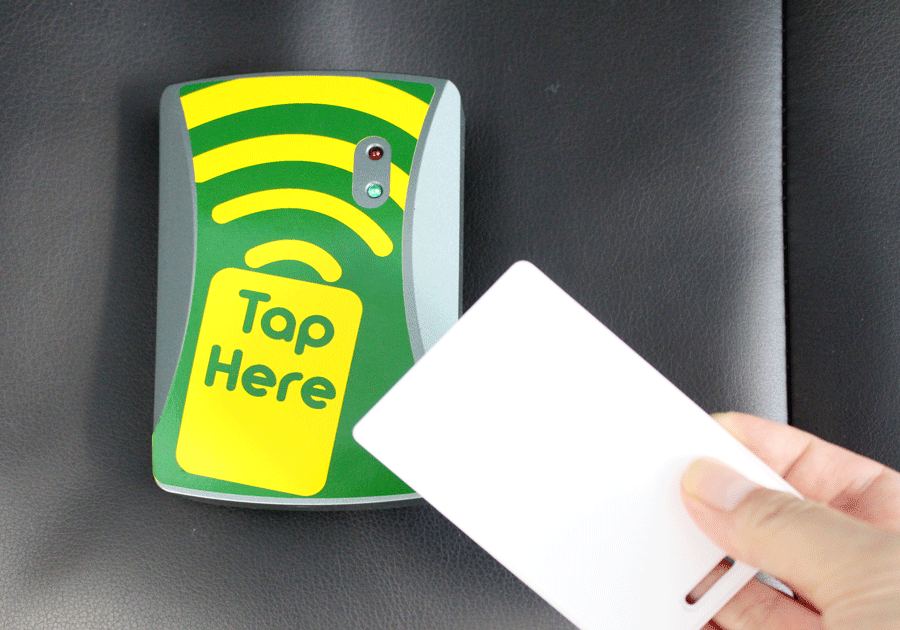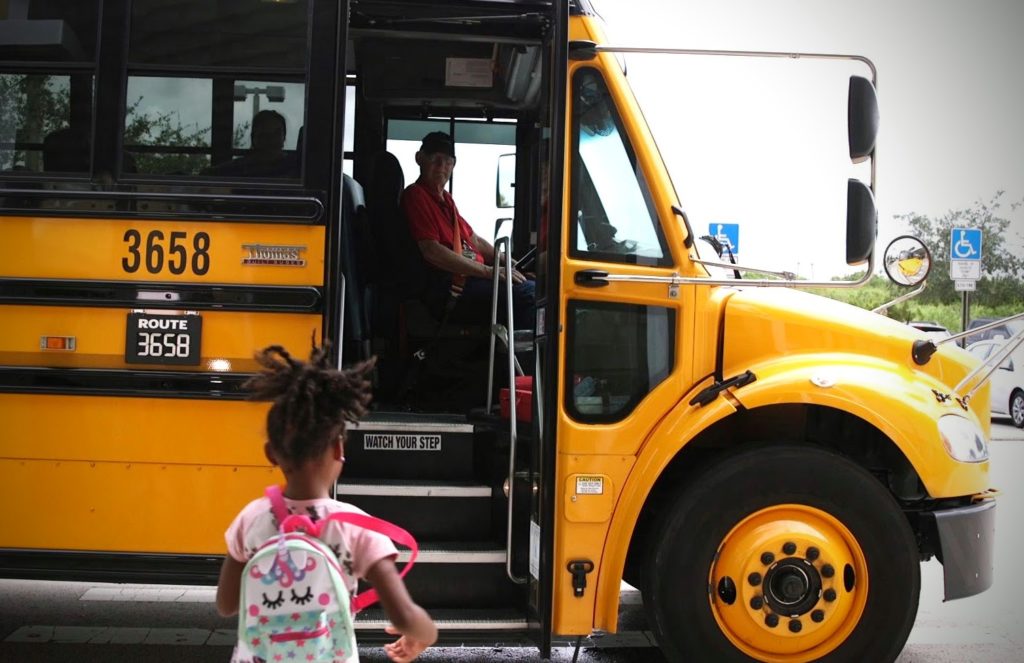The tracking of students on school buses is all about safety. In order to do their jobs properly, those who are responsible for students need a reliable way to communicate student and bus data to authorities during emergency situations.
From a safety perspective, boarding a school bus can be viewed similarly to boarding an airplane. Knowing who is on the vehicle contributes to the level of safety that can be provided and in some cases determines whether the bus even leaves a stop. Some districts indicate a student tracking program is mandatory and will not allow students who are not enrolled in the program to board.

The value of Student Tracking
Student tracking technology delivers real and concrete benefits to school districts and peace-of-mind to parents. Here are a few examples:
- Students don’t always get off at the same stop every day; sometimes they get off the bus with a friend and go to the friend’s house instead. Having access to real-time information on who is on the bus and who exited the bus at which stop can allay unnecessary fears and misinformation. If a parent calls, the district can rest assured that they have the latest and most accurate information.
- Student tracking systems can also relieve a burden from your bus operators who have enough to do without keeping track of each student on board each bus. Operators can focus on the safe loading and unloading of students while scanning oncoming traffic for potential risk.
- Operators also have a few moments to interact with students as they board and register with the tracking system, developing ongoing relationships with the students which are vital for establishing respect and credibility.
- Student tracking enables a wide range of back-end data that can be fed into annual reporting, budgeting and resource allocation and route scheduling and optimization programs.
Searching for the right vendor/product
When searching for a student tracking vendor, ensure your vendor of choice can supply a proven track record and good references that can talk to program functionality as well as responsiveness and reliability of customer support.
You might also want to raise the topic of roadmap and integration options to ensure what you buy today can grow to meet your needs tomorrow.
Lastly, it’s important to select a system that uses radio frequency identification cards, commonly referred to as RFIDs, which can help a school district do more with less by tying into other school programs such as lunch or roll-call systems.
How Student Tracking works

As each student boards their bus, they scan their RFID cards on a card reader mounted at the top of the front stepwell. Student data is transmitted over a secure cellular connection, providing real-time access to vehicle occupant information and rapid lookup of last known student location. It’s important to note that student names or personal information are not transmitted.
In cases where operators are transporting special education students, operators can manage the student ID cards, scanning the appropriate card for each student as they board.
Paving the way to onboarding your new system
Getting a student tracking program up and running takes time and planning. Here are a few suggestions to help you prepare:

1. Get the word out.
Tell parents, students, the community, principals, all departments in the school district and bus drivers about your proposal. Focus on conveying the safety message and downplay the use of the word “tracking.”
Assure your stakeholders the technology will only be used to determine the identity of each student on each bus, including their boarding and exit stops along with relevant timestamps.
2. Above all, get buy-in from your bus operators.
Turn your operators into “program champions.” Ensure each operator understands the value of the system to them specifically.
Operators are currently expected to do everything all at once — drive the bus, watch the mirror, watch the cars, watch the students, notice who gets on and off the bus at each stop, and take down the make, model and license plate of cars that blow past when students are at risk. Bus operators need to know this system will help them stay on top of their responsibilities easier.
Successful roll-out strategies
Once you’ve made the decision to implement a student tracking solution, the following tips can help you roll out successfully:

- Tie your student tracking program in with another program such as a lunch or student ID program. A tracking card on its own could easily get misplaced or lost. A card that is tied to a lunch program is far more important to the student and students will take extra care.
- Try not to launch your program at the start of a school year when things are already somewhat disorganized. It takes time to get your message out there. You also need to factor in time for working out the kinks on all levels — with students, parents, and drivers.
- Start small and go from there. Try your program with grades K – 6 in the first year. The following year you can expand to middle through high-school.

The main goal here is to always know who is on the bus – increasing student safety at every turn.
For more information on student tracking, or technology that helps increase the safety of students both in and outside the bus, contact us.

